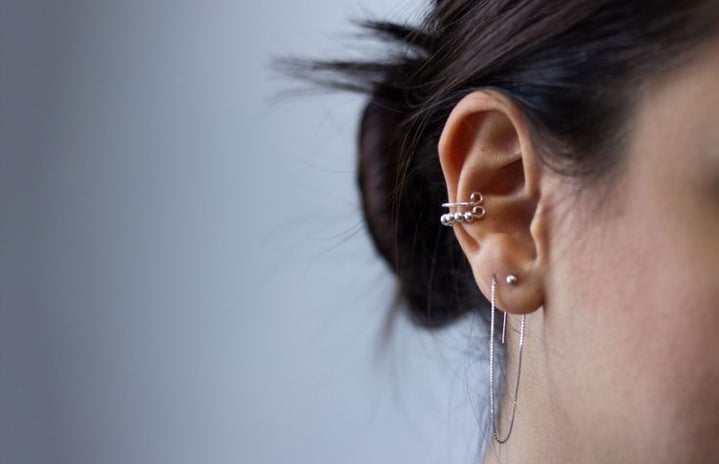The opinions expressed in this article are the writer’s own and do not reflect the views of Her Campus.
This article is written by a student writer from the Her Campus at UNT chapter.
If you’re like me, you love using style to express your personality. One way to show off your personal style is through piercings! I have been into piercings since I was a kid, and the only thing stopping me from constantly adding new ones is my budget. Because of this, I’m sharing some tips (specifically for earrings) from my experience in a consolidated list:
planning your piercings
- Check out a piercing chart for inspo.
- If you’re planning on getting multiple piercings, consider dividing them up. Some piercers won’t let you get both ears done on the same day (other than lobe piercings) because it can be hard to sleep with fresh piercings on both sides. Because of this, you should wait about a month to get your other ear pierced. Depending on your pain tolerance, you might not want to get multiple piercings in one day. The initial piercing can swell and cause additional ones to be more painful than they would be individually.
- If you’re going to a new piercer, consider their walk-in/appointment policy and pricing before you go. (This can sometimes be hard to find, so I would recommend checking their website, social media, and calling them.) Depending on the location, individual piercings cost around $30-60 plus tip (for face and ears, body piercings can be higher).
aftercare
- The safest way to heal your piercings is to follow your piercer’s instructions and timing recommendations. Common aftercare options are products with saline or gentle, non-antibacterial soap. I would recommend saline sprays (cheap, easy to use, but can run out quickly) or saline solutions for contacts (cheap and you won’t have to re-buy as often).
- Depending on its location, you should clean your piercing twice a day for around 3 months to a year, when it will be completely healed.
- If you have any issues with your piercings, check with your piercer for advice. Some issues can resolve on their own, but you should research/contact your piercer if you experience bumps or keloids. Your piercer can also help you with issues related to changing jewelry (for example, some gauge/bar sizes can be hard to take out).
- When switching jewelry, make sure your new earring is the right gauge/bar size per piercing. If you know you are sensitive to certain materials, try to find hypoallergenic jewelry options.


